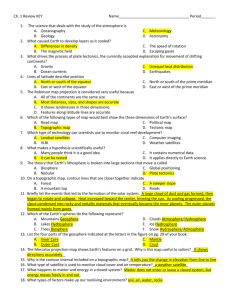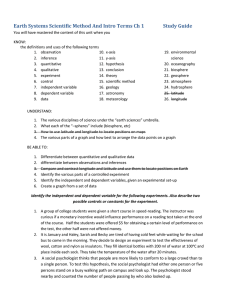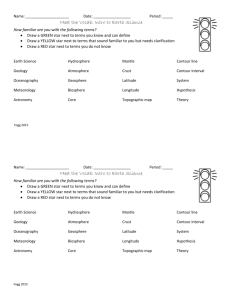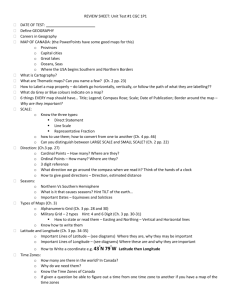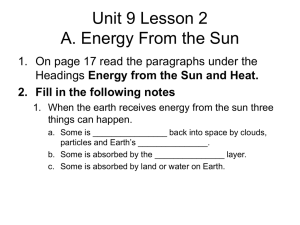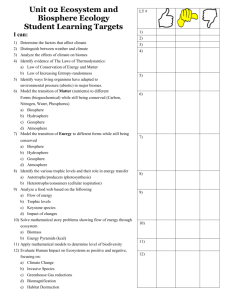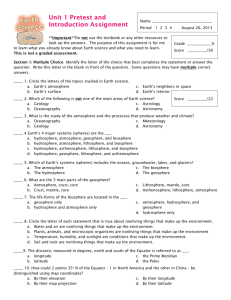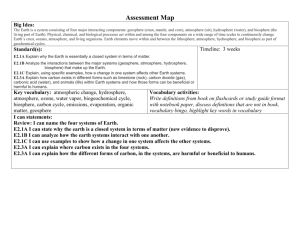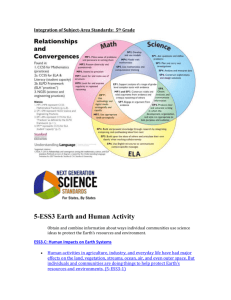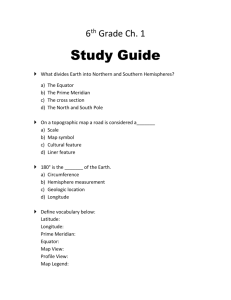Ch 1 study guide answer key
advertisement
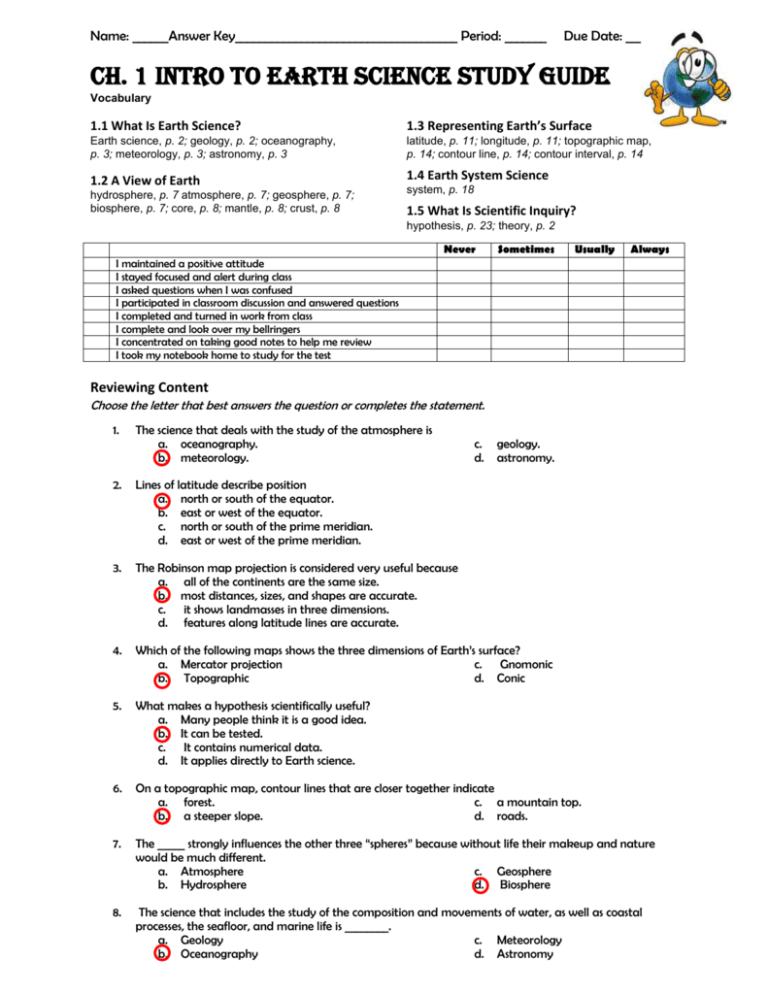
Name: ______Answer Key_____________________________________ Period: _______ Due Date: _______ Ch. 1 Intro to Earth Science Study Guide Vocabulary 1.1 What Is Earth Science? 1.3 Representing Earth’s Surface Earth science, p. 2; geology, p. 2; oceanography, p. 3; meteorology, p. 3; astronomy, p. 3 latitude, p. 11; longitude, p. 11; topographic map, p. 14; contour line, p. 14; contour interval, p. 14 1.2 A View of Earth 1.4 Earth System Science hydrosphere, p. 7 atmosphere, p. 7; geosphere, p. 7; biosphere, p. 7; core, p. 8; mantle, p. 8; crust, p. 8 1.5 What Is Scientific Inquiry? system, p. 18 hypothesis, p. 23; theory, p. 2 Never Sometimes Usually Always I maintained a positive attitude I stayed focused and alert during class I asked questions when I was confused I participated in classroom discussion and answered questions I completed and turned in work from class I complete and look over my bellringers I concentrated on taking good notes to help me review I took my notebook home to study for the test CHAPTER Reviewing Content Choose the letter that best answers the question or completes the statement. 1. The science that deals with the study of the atmosphere is a. oceanography. b. meteorology. 2. Lines of latitude describe position a. north or south of the equator. b. east or west of the equator. c. north or south of the prime meridian. d. east or west of the prime meridian. 3. The Robinson map projection is considered very useful because a. all of the continents are the same size. b. most distances, sizes, and shapes are accurate. c. it shows landmasses in three dimensions. d. features along latitude lines are accurate. 4. Which of the following maps shows the three dimensions of Earth’s surface? a. Mercator projection c. Gnomonic b. Topographic d. Conic 5. What makes a hypothesis scientifically useful? a. Many people think it is a good idea. b. It can be tested. c. It contains numerical data. d. It applies directly to Earth science. 6. On a topographic map, contour lines that are closer together indicate a. forest. c. a mountain top. b. a steeper slope. d. roads. 7. The _____ strongly influences the other three “spheres” because without life their makeup and nature would be much different. a. Atmosphere c. Geosphere b. Hydrosphere d. Biosphere 8. The science that includes the study of the composition and movements of water, as well as coastal processes, the seafloor, and marine life is ________. a. Geology c. Meteorology b. Oceanography d. Astronomy c. d. geology. astronomy. Understanding Concepts 9. Which of Earth’s spheres do the following represent? a. Mountains: Geosphere b. Lakes: hydrosphere c. Trees: Biosphere d. e. f. Clouds: Atmosphere Ice: Hydrosphere Snow: Hydrosphere 10. List the three parts of the geosphere indicated at the letters in the figure. a. ______Inner Core___________________ b. ______Outer Core___________________ c. ______Mantle___________________ d. ______Crust___________________ 11. What are Conic projections used for? Weather and Road Maps 12. Why is the contour interval important to know on a topographic map? So you know the elevation. 13. What are the two sources of energy for the Earth system? Sun and core of Earth 14. What is the first step to the scientific method? Find a problem Critical Thinking 15. How is a scientific hypothesis different from a scientific theory? Hypothesis is an educated guess, while a theory is well accepted and backed by data 16. Explain the following statement: If Earth had no atmosphere, our planet would be lifeless . No oxygen to breath, no carbon dioxide for plants, and intense solar radiation would kill everything. Use the bar graph to answer Questions17. 17. Approximately how many miles is 1 kilometer equal to? 1 km = .6 miles Map Skills Use the map to answer questions 18 and 19. 18. How far is it in miles from point B to point E? 2 miles 19. What is the elevation of Sugar Loaf Mountain? 11300 feet Use the map to answer questions below 20. What is the latitude and longitude for point A on the map? 30˚N, 60˚E 21. Locate the state of Florida on the map. What is the approximate location of its southernmost point? 25˚N, 82˚W 22. Which lines run east and west? Latitude 23. Compare and Contrast point B to point F. Same longitude 30˚W different latitude .F
